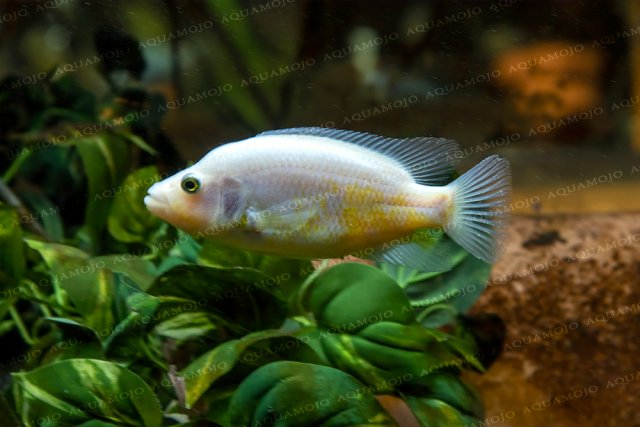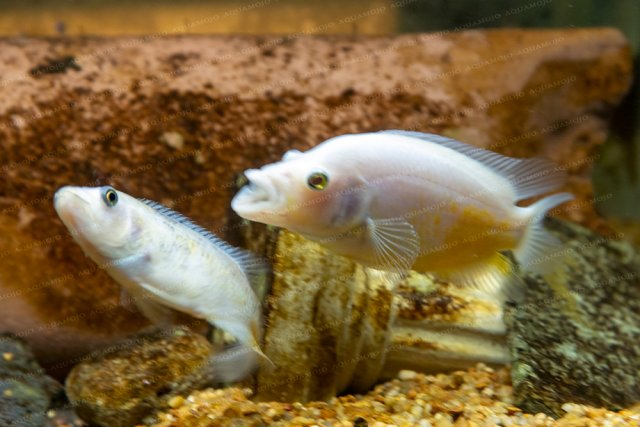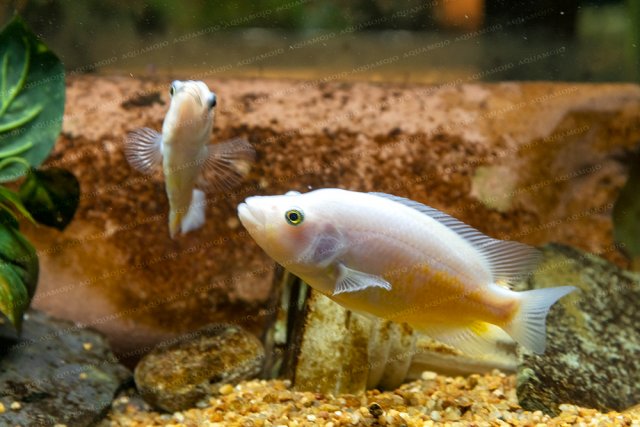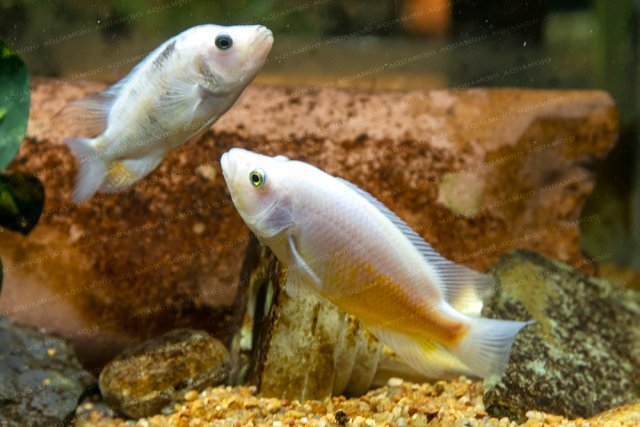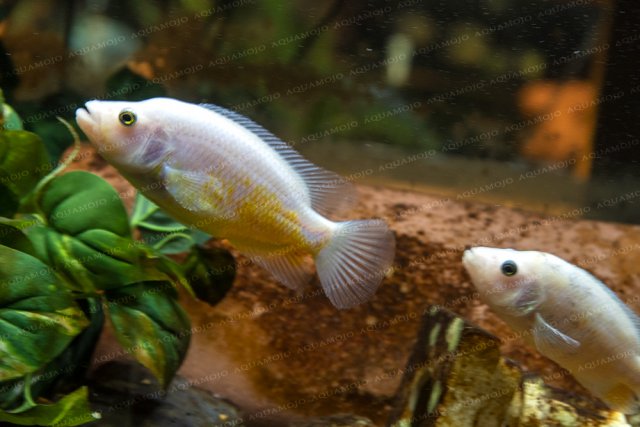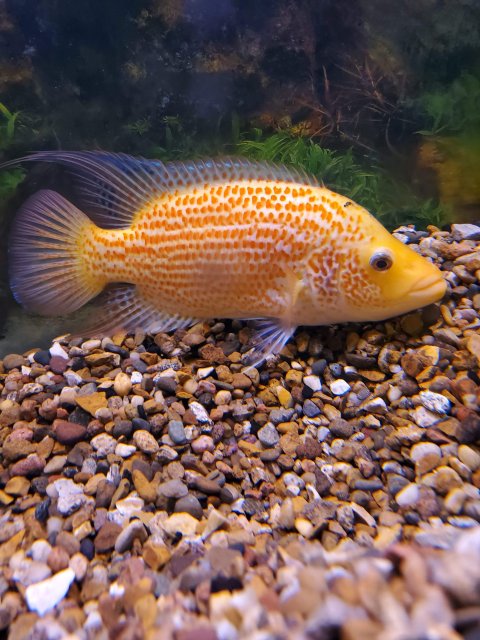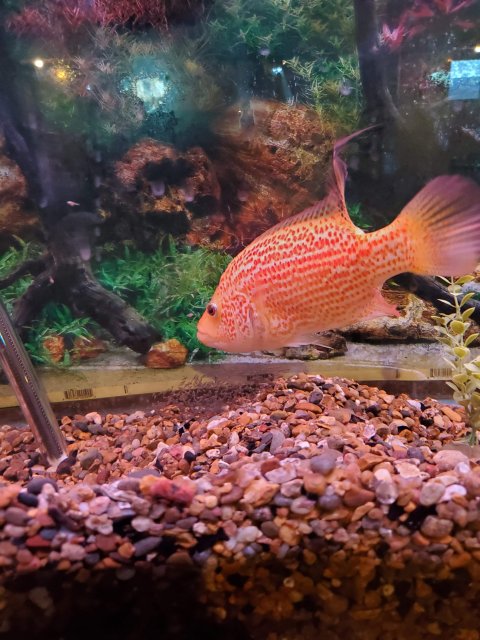Thanks for the response Modest_Man. As I read the information you provided I understand more firmly about the discovery of the red dovii. Now for more questions...lol. Since the red dovii was discovered over 50 years ago in the same waters as what we know as the “common” dovii, is it the assumption that the 2 variants do not breed together in their natural habitat? And if so, wouldn’t the red gene be stamped into the dna of many “common” dovii? Now, as much as dovii “has been and still are” being bred in the hobby shouldn’t we see more red dovii show up? Sounds like this dovii variant is more of an anomaly as opposed to any sort of standard. Thanks again for the information...can we dig a little deeper?
In Amphilophus, the "gold" morph occurs in less than 10% of wild fish, and even when the gene is present, it typically only manifests in fish living in deep, turbid waters. This is all well documented by George Barlow et al many years ago. Collectors will typically collect fish where they are easiest to collect, which is certainly not this portion of the San Juan River, where hook & line is probably one of the few methods used to "catch" fish. Clearly dovii are not all collected in the same watershed, at the same location, which would also explain as to why these hadn't surfaced in the hobby until several yrs ago.
I posted the following several years ago, and it was later made a sticky. https://www.monsterfishkeepers.com/forums/threads/faders-explained.396860/
I thought that I would compile some info in regards to FH faders, where the fader gene originates from, and why it only surfaces in some fish.
Amelanism is a pigmentation abnormality characterized by the lack of pigments called melanins (black pigment) and can affect reptiles, fish, amphibians, etc. The appearance of an amelanistic fish (such as a fader) depends entirely on the remaining non-melanin pigments. In some cases where a fish does not completely fade or finish peeling, with some black pigment remaining, the condition is known as hypomelanism.
You can read more about these various color morphs in great detail in the following link.
http://hubpages.com/hub/Understanding-Reptile-Color-and-Correct-Color-Terminology
Oddball has a very good list of terms in the link below as well.
http://www.monsterfishkeepers.com/forums/showthread.php?t=38534
Both A. labiatus & A. citrinellus are the species involved that introduced this "fader" gene into the flowerhorn mix. Faders are simply a genetic throw back to some of the amphilophus that have been used to create certain flowerhorn strains. There has been a lot of work done with the Amphilophus genus by George Barlow & others, and in the wild these genes only express themselves in approx 10% of the population.
http://digitalcommons.unl.edu/cgi/viewcontent.cgi?article=1022&context=ichthynicar
The actual timing of de-pigmentation is determined by a different set of genes hence the reason why some fish seem to peel very early in life, while others are almost adult size before they begin to fade/peel. And of course in the wild fading/peeling at too early of an age/size makes the fish a much easier target for prey, so many wild morphs are late bloomers.
According to some of the earlier work peformed by George Barlow, gold morphs are most abundant at deeper depths, and in more turbid water. Lake Masaya has very turbid water, and gold morphs are very abundant in this body of water. Lake Apoyo has quite clear water, and while the gold morph genes are present in the fish, no true gold morphs are found. The fish in this lake have the typical spotted & barred patterns.
Hopefully the above info helps explain how & why the fader gene expresses itself within flowerhorns.
To further that info.....

(PDF) Sexual selection and genetic colour polymorphisms in animals
PDF | Genetic colour polymorphisms are widespread across animals and often subjected to complex selection regimes. Traditionally, colour morphs were... | Find, read and cite all the research you need on ResearchGate
"The barred/gold polymorphisms of Midas cichlids in the Amphilophus species group
provide another example of a regulatory mechanism underlying colour differences.
Unlike the blotch/plain polymorphism above, Amphilophus dark/gold colour morphs
are not sex linked and very rare, with <10% of the population consisting of gold
morphs. Large inter-individual variation in the timing of golden colour emergence
exists, with some individuals displaying the golden colour when they are a few
months old, but in others, it can start at an age of several years (Mattersdorfer et al.
2012). The onset of ontogenetic colour change is marked when the melanophores of
dark juveniles degrade thereby allowing underlying xanthophores to become visible,
and often this colour change does not progress uniformly. The gold polymorphism is
determined by a Mendelian two-allele single locus model, with gold being dominant,
and there is no mc1r sequence polymorphism (Henning et al. 2010). This is unlike
the melanic colour polymorphism in the guppy (Tezuka et al. 2011) and many
tetrapod vertebrates (Hoekstra 2006; Hofreiter & Schöneberg 2010), which are often
associated with mutations in the coding sequence of the mc1r gene. Comparative
analyses revealed high coding synteny between Amphilophus when compared to
other teleosts, and yet, contradictory with its function in melanin synthesis, it was
found that mc1r was upregulated in the gold morph (Henning et al. 2010)"



